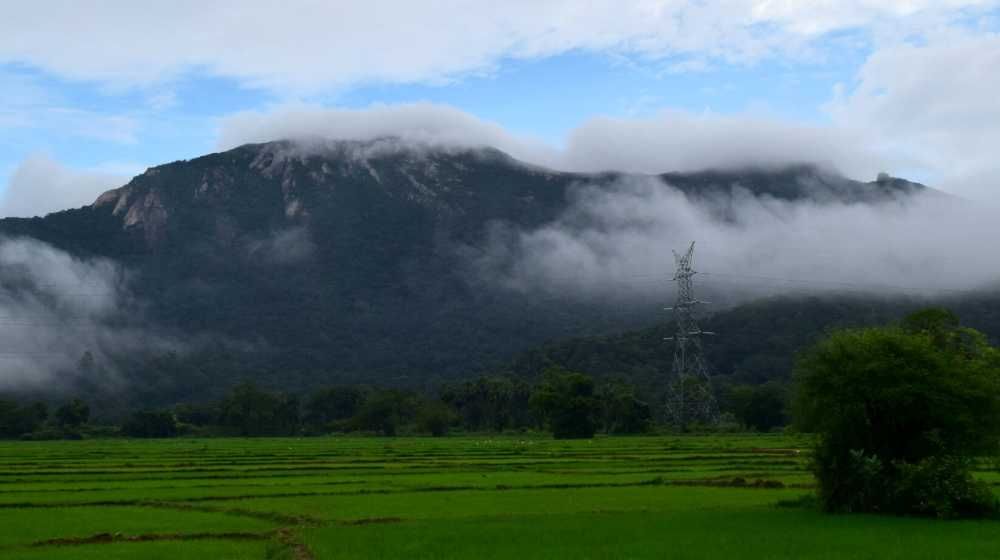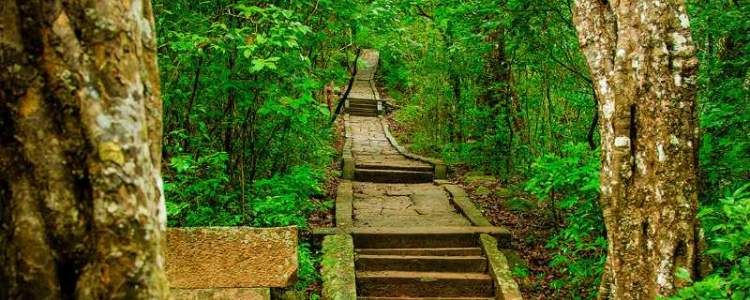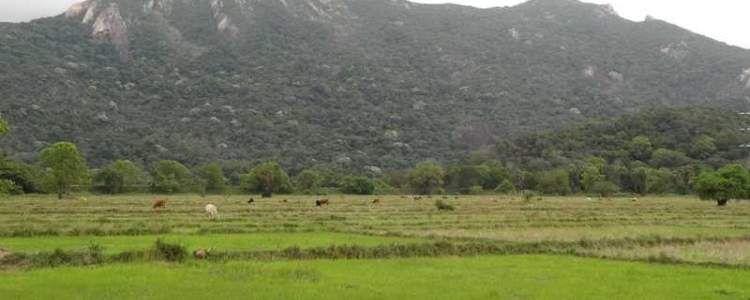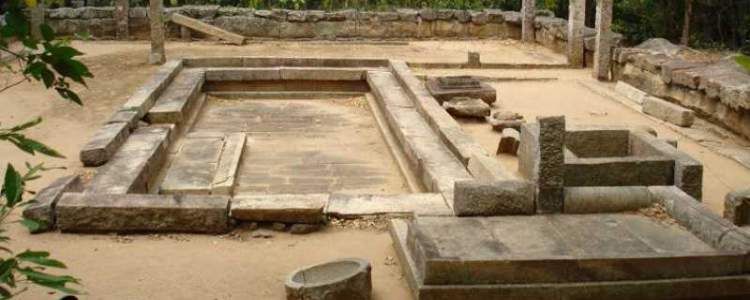
Ritigala Sanjeevani Mountain (Ritigala Strict Nature Reserve) Sri Lanka
Ritigala mountain is a designated Strict Nature (SNR) in Sri Lanka located near Kekirawa in Anuradhapura District North Central Province between Habarana and Maradankadawala of Sri Lanka having an area of 3,776 acres. Ritigala has significances from archaeological, historical, cultural, botanical and zoological (Natural environment) aspects. Ritigala mountain is one of the 501 Protected Areas (PA) under direct supervision of Department of Forest & Department of Wildlife Conservations of Sri Lanka due to very abnormal and high biodiversity of the said area.
Simply Ritigala is a nature reserve having much significant values and it boasts of archaeological and ecological uniqueness. It is an also a very popular destination for unbelievable climate patterns. It was declared a Strict Nature Reserve in 1941 as it is home to a rare ecosystem rich in plants with rare fauna species.

Main vegetation types in Ritigala Strict Natural Reserve
Dry-Mixed Evergreen Forest (844.7 ha, 64.9% total area)
Disturbed Dry-Mixed Evergreen Forest (134.7 ha, 10.4% of total area)
Short-Stature Forest (82.3 ha, 6.3% of total area)
Vegetation associated with Rock Outcrops (163.6 ha, 12.6% of total area)
Scrub (75.3 ha, 5.8% of total area)

What is Strict Nature Reserve or SNR ?
A strict nature reserve (IUCN category) is one of the two highest categories of protected areas recognized by the World Commission on Protected Areas (WCPA). These areas are mainly declared for the purpose of research and for preservation and protection of large, unspoiled areas of wilderness. The primary purpose of such areas is to preserve biodiversity as essential reference areas for scientific work and environmental monitoring.
Legends of Ritigala Mountain Sri Lanka
In Ritigala there is one of the most important monasteries of forest monks. It is also served as a hospital for Ayurvedic treatment, because the Ritigala hills are famous for their abundance of plants of medical value. Ritigala mountain range remains off the beaten track cultural and eco travel destination in Sri lanka. This mountain range consists of 4 mountain peaks. The main and the highest peak is Ritigala kanda SNR which is currently managed by the Department of Wildlife of Sri lanka. The ruins of Ritigala makes it a place with an extreme archaeological value while the unique and rare vegetation of flora and fauna remarks the importance of the ecosystem.

Archeological evidence of Ritigala strict nature reserve
As per the historical evidence, during the reign of King Suratissa (187 BC-177 BC) another Buddhist temple knows as Sanka Vihara was constructed at the foot of Ritigala. According to the great chronical Chulawamsa Sri Lanka, King Jettatissa organized his army at Ritigala, before he rescued the country from Indian invaders. Most important period of Ritigala was started in 831 and ended in 851, during the reign of King Sena. Most of the monasteries were given maximum patronage of the state rulers at that time but later most of these monasteries were damaged by Indian invaders Chola 1200 AD.

According to Ramayana Story Ritigala Mountain
The origin of Ritigal is dating back to many centuries. First historical note of Ritigala is accredited to the legendary era of Ramayana. According to the legend, it was derived from a patch of forests that was brought to the Lanka Pura by Hanuman from Himalaya mountain. Even today Ritigala harbors an abnormally large number of herbal plants, and popular in the island especially due to the abundance of medicinal plants.
Therefore It is believed that there is a direct link between Ritigala Mountain and the Ramayana The Great Indian epic. According to the Ramayana Yatra Sri Lanka states that when Rama and his brother Lakshmana were wounded at the war, specific medicinal herbs were required to save their lives.so, Hanuman was dispatched to Mount Dronagiri in the Himalayas to fetch these particular herbs called Sanjeevani herb, others say he had to find four different types of herbs. After arriving in the Himalayas through the air, it is mentioned in the epic of Ramayana that Hanuman had forgotten the very long names of the medicinal herbs. So, he decided to carry the entire mountain Dronagiri where these herbs grew. However, five fragments of Mount Dronagiri slipped and fell down while Hanuman flying over the Palk Strait and the island of Lanka while the largest of them forming the new mountain which is now names as Ritigala and then the mountain named as Ritigala Sanjeevani mountain according to the Ramayana tour in Sri Lanka. Therefore it is believed that the Origin of Ritigala’s medicinal herbs associated with the Ramayana story and this Ritigala became an important sites of Ramayana tour of Sri Lanka.

How many Sanjivani (Sanjeevani) mountains in Sri Lanka ?
Kachchativu island in Jaffna, Northern province of Sri Lanka
Thalladi close to Mannar.
Ritigala between Anuradhapura and Polonnaruwa,
Dolukanda near Arankale ancient monastery hospital,
Rumassala in Unawatuna near Galle.
How to access the site? The Archeological Site of Ritigala is situated at the eastern slopes of the Ritigala mountain range where the entrance of the excavation site is 20 km to the northwest of Habarana by road



